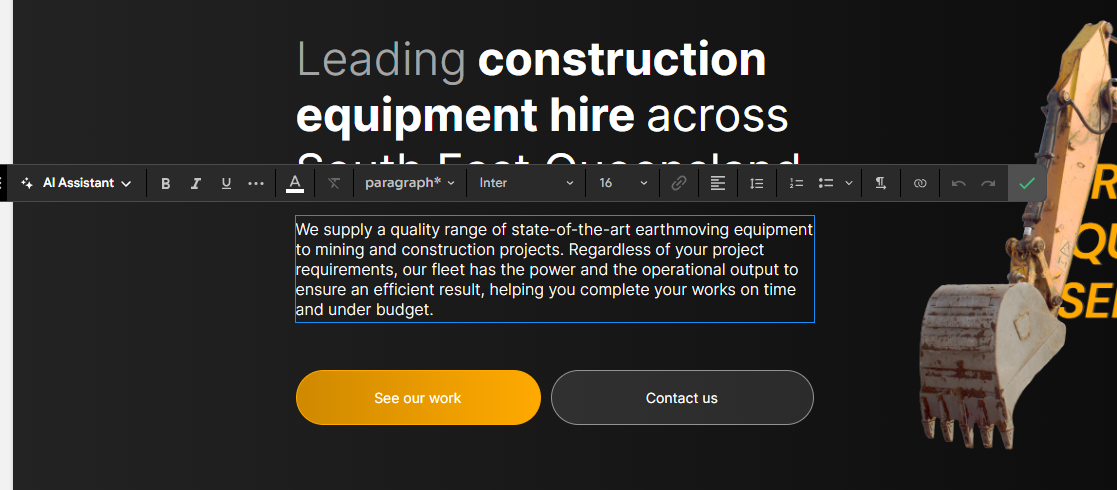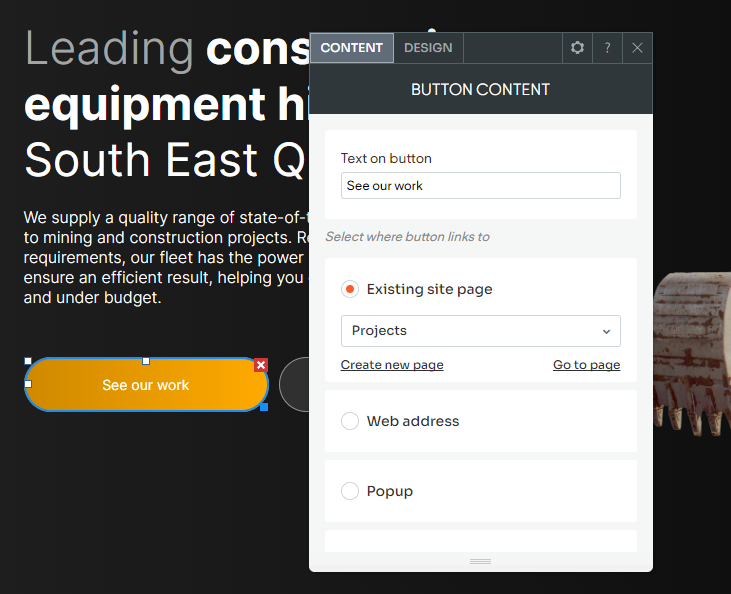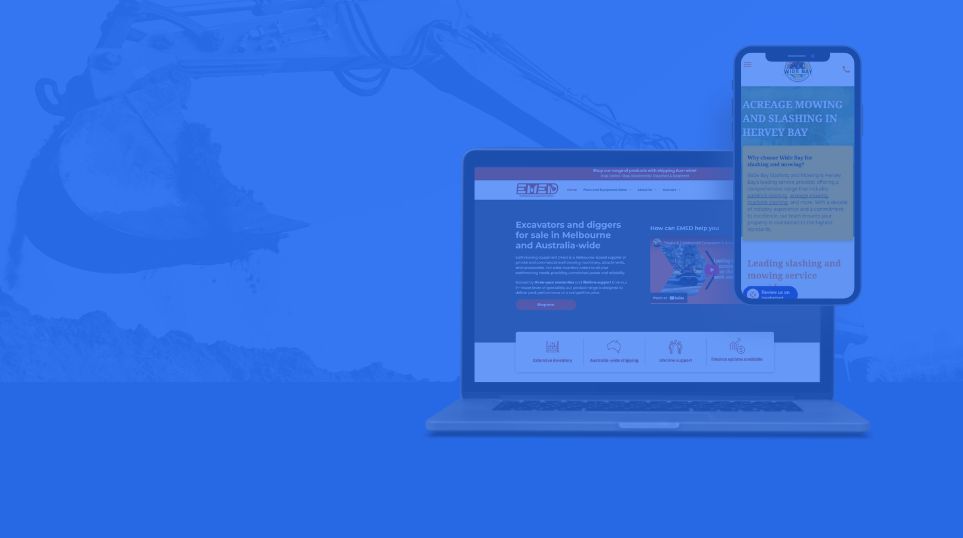Updating, changing and styling text content

Before we begin...
There are a few important things to note before editing content on your website:
Website performance:
Our content writers have researched keywords and carefully optimised your website to rank for certain products, services, and locations. Changing the content may impact the performance of your website.
Paste without formatting:
Sometimes copying and pasting text from software such as Google Docs or Word can also copy across the formatting (font, size, boldness, etc.). To mitigate this, you can use the following shortcuts to “paste without styling”.
- On Windows: Shift + Alt + V
- On Mac: Shift + Command + V
Now that's out of the way, let's learn how to edit text!
Editing text
Editing text is similar to using most word processors.
- Click on a text box to select it, and make it active.
- While active, you will be able to type in your new text.
- You can use the toolbar to format the text (i.e. select between a title or paragraph tag, bold, underline, italicise), add dot points, hyperlinks, and more.
- Once complete, click the green tick to save your changes.

Editing button text
Buttons are widgets, so editing the text on them is a little different.
- Click on a button to select it, and open up its settings window.
- Select the "Content" tab.
- Edit the "Text on button" field to update the text.
- Below the text field is where you can change where the button links to, whether it is an external website, a page within the website, or more.

Editing text in other widgets
Similar to buttons, other widgets such as image galleries and sliders have their own content and design settings.
To edit widgets:
- Click on the widget to select it, and open up its settings window.
- Select the "Content" tab.
- Find the relevant text you wish to edit, and change it here.
Note: For widgets with images, you may need to click on the image, and find the title and description fields within.
Style guide tips:
Underlines
Underlines on a website typically denote a hyperlink. Only use these for links, and avoid using them to highlight keywords. Amber Hinds explains the use of underlines to improve accessibility here.
Titles
Keep your titles styled consistently throughout the website to stick to a consistent hierarchy and improve the reading experience by using the "title" tags in the text editor. A page should only have a single H1 tag.
Here is an example of a page layout:
H1 - Page title
H2 - Section 1 title
H3 - Section 1 subtitle
H2 - Section 2 title
H3 - Section 2 subtitle



